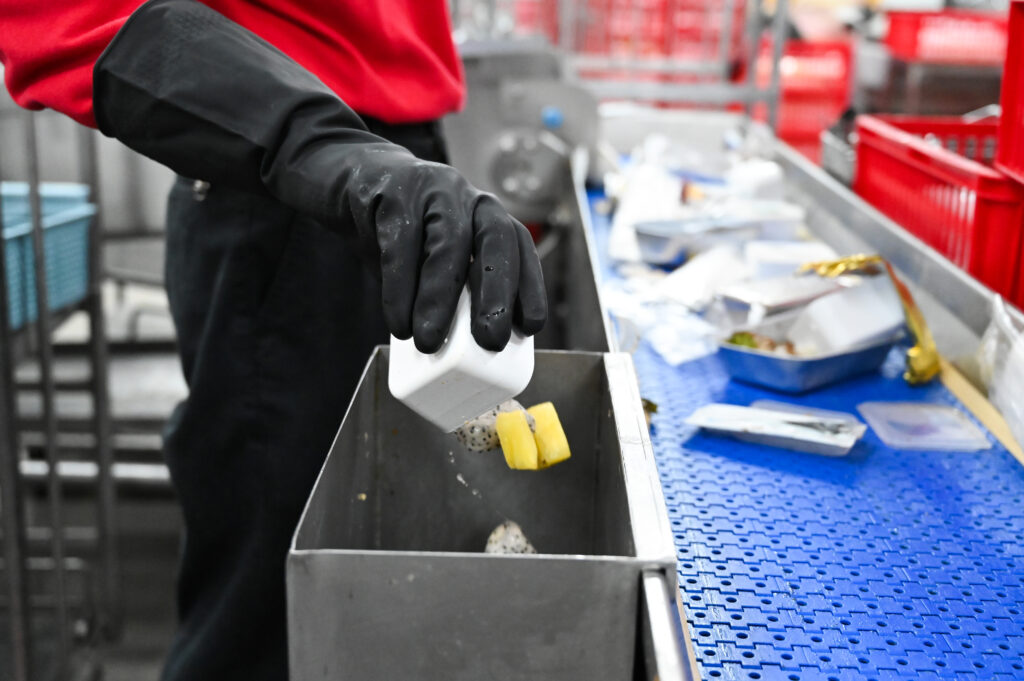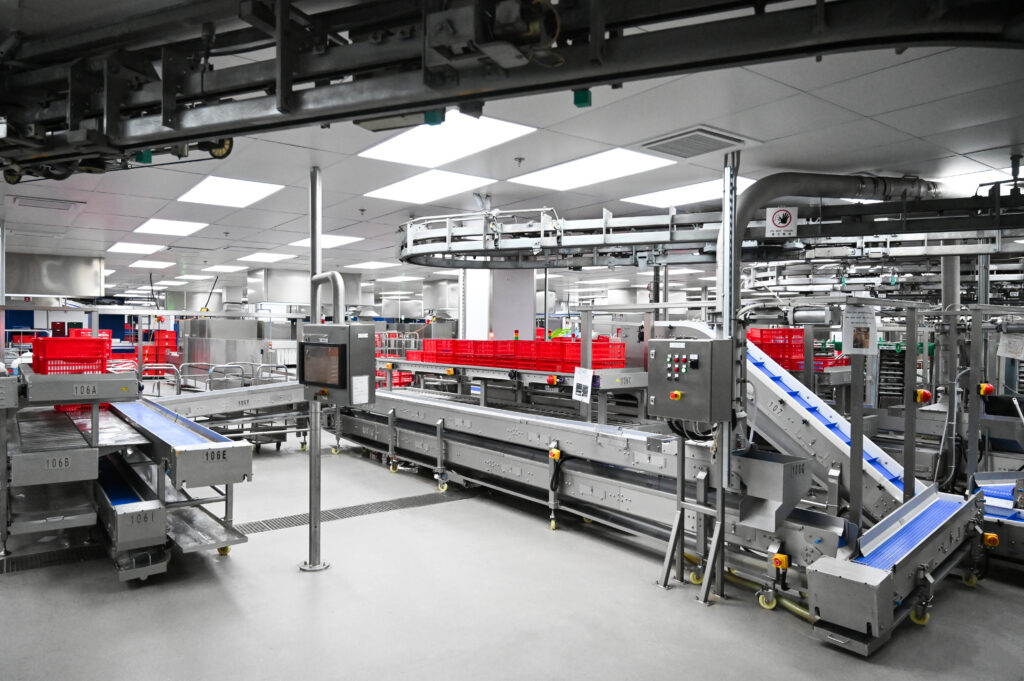Cathay Dining Champions Sustainable Catering with Innovative Food Waste Segregation System
Share

In a noteworthy step towards sustainable aviation catering, Cathay Dining, the in-flight catering subsidiary of Cathay Group, has launched an innovative food waste segregation warewash system. With this advancement, Cathay Dining becomes the first airline caterer in Hong Kong to implement large-scale food recycling for inbound passengers.
From Inbound Food Waste to Renewable Energy
Cathay Dining, which was founded in 1967, currently serves over 50 airlines – including its parent company, Cathay Pacific – from its facility at Hong Kong International Airport. The company produces over 82,000 meals daily.

This week, Cathay Dining unveiled its redesigned warewash system, with Cathay Dining CEO Agatha Lee commenting, “We are proud to lead the way in sustainable practices and operational excellence within the inflight dining industry.”
The state-of-the-art warewash system designed to address the numerous challenges of in-flight catering operations. The system features dedicated conveyors and compactors that efficiently separate food waste from the general waste collected from inbound flights, increasing food waste recycling capacity by 200%.
The segregated food waste is transported to the Organic Resources Recovery Center (O·PARK) on Lantau Island. The facility utilizes anaerobic digestion to convert organic waste into renewable energy. It can process up to 500 tonnes of food waste daily, generating sufficient electricity to power approximately 8,000 households annually. The process significantly contributes to Hong Kong’s renewable energy supply while reducing its dependency on landfills.

In addition to the environmental benefits, the new warewash system enhances operational efficiency. The multi-purpose washers can handle various types of equipment simultaneously, providing greater adaptability and flexibility.
As a result of separating the stripping and washing processes, the system ensures that the washers only operate when a predefined threshold is met, thereby optimizing machine utilization and reducing unnecessary energy and water consumption. According to Cathay Dining, the system achieves a 70% reduction in electricity consumption and a nearly 60% reduction in water use compared to the previous systems under current operating conditions.
“By reducing utility consumption and featuring an innovative food waste segregation design, this new system future-proofs operations and enables us to meet the evolving needs of our customers with a focus on sustainability – highlighted by the recycling of inbound food waste,” Lee explained.
Leading by Example: Cathay Dining and Others Advance Large-Scale Catering Sustainability
As the aviation industry strives to become more sustainable, Cathay Dining’s approach serves as a model for integrating environmental responsibility with operational efficiency. The new warewash system underscores the company’s commitment to reducing its ecological footprint while setting a precedent for others in the industry. That said, Cathay Dining is not the only major airline catering service to have implemented large-scale initiatives for recycling inbound food waste; other notable examples include JAL Royal Catering and American Airlines.

JAL Royal Catering, a subsidiary of Japan Airlines, implemented a comprehensive food waste recycling program in July 2022. The initiative focuses on recycling 100% of food and beverage waste from in-flight meals through composting, which is then utilized for agricultural purposes.
Similarly, American Airlines has incorporated sustainability into its catering operation at its Dallas/Fort Worth kitchen, which is the largest catering kitchen in the United States. The facility turns food waste into compost. As trays and dishes are cleaned, waste is collected and distributed to farms and compost facilities. In 2023 alone, composting from the facility and Admirals Club locations at the airport delivered more than 419,000 pounds.


